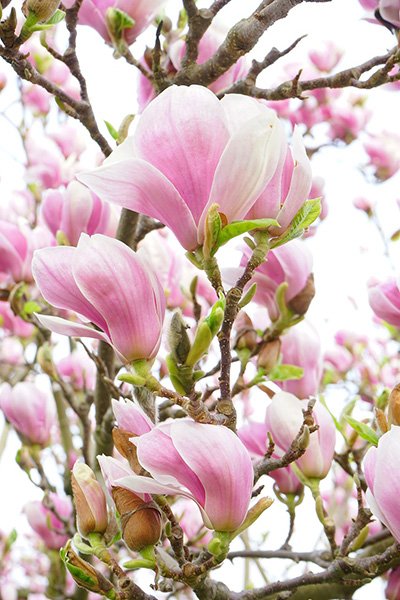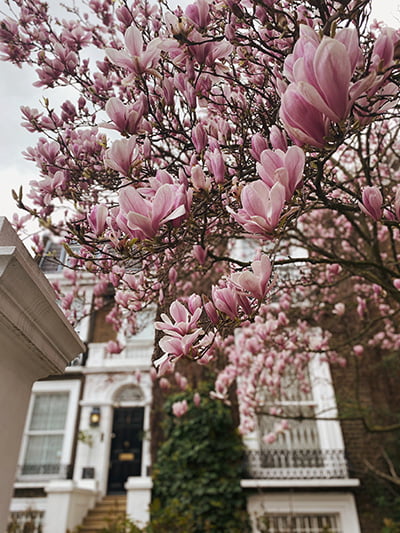In the world of horticulture, few plants captivate the senses quite like the Magnolia liliiflora, commonly known as the "Lily Magnolia." With its enchanting blossoms that resemble delicate lilies and its graceful, multi-stemmed growth habit, this flowering tree has earned its place as a beloved garden gem. Whether you're an experienced gardener or just starting your journey into the world of cultivating ornamental plants, the Magnolia liliiflora offers a rewarding and fulfilling experience.
In this comprehensive guide, we'll dive into the art of growing and caring for Magnolia liliiflora, uncovering the secrets to ensuring its vibrant blooms grace your landscape year after year. From understanding its natural habitat to mastering the essential cultivation techniques, we'll cover everything you need to know to cultivate these stunning trees successfully.
Botanical Name
Common Name
Plant Type
Mature Size
Sun Requirement
Soil Type
Hardiness Zone
Pet Friendly
Magnolia liliiflora
Mulan Magnolia, Woody Orchid Tree
Deciduous Shrub/Small Tree
120-180 inches (height)
Full Sun to Partial Shade
Well-drained, Loamy
USDA Zones 5-9
No
What Is Magnolia Lilliflora?
Lily Magnolia originally hails from southwestern China. They are sometimes called Japanese Magnolia, because the specific cultivars that came to the United States were grown in Japan. Other names include Purple Magnolia, Tulip Magnolia, Jane Magnolia, Mulan Magnolia, Yulan Magnolia, Red Magnolia, and Woody Orchid. Phew!
This deciduous shrub blooms from late winter through to early spring, playing its role as one of the first flowering trees to burst into bloom as the winter starts to fade. There are many varieties, each with slight color differences, but the flowers typically are a purplish red. Depending on the temperatures, the dark reddish-purple flowers can continue to bloom through the summer! When the blooms start to drop, you can enjoy the dark green leaves for the rest of the growing season.
Lily Magnolia is the smallest species of the Magnolia genus and can fit into your landscape as both a large shrub or small tree. The branches of this tree shoot out from its base, which gives it a bushy growth habit. It can eventually reach heights between 8 and 12 feet but can be pruned to fit your space. It suits small cottage gardens, city gardens, and forest edges perfectly.

Image Source: Pixabay
Lily Magnolia Care Requirements
Light
Magnolia Liliiflora is a sun-loving plant! It does its best flowering if planted in a full-sun location. This means it must receive at least 6 hours of direct sunlight daily to thrive. However, it has been known to adapt to partial shade environments. You won't get as many blooms, but it will still grow and add color to your landscape.
Providing partial shade is particularly important in regions with hot and arid climates. Excessive heat and direct sunlight can lead to stress, sunburn, and excessive water loss through transpiration. By balancing sunlight and shade, you can help the Lily Magnolia maintain its moisture and thrive without becoming scorched.
Water
Lily Magnolia prefers its soil to be kept moist, although never soggy. Recently planted Lily Magnolias necessitate more regular watering until they develop a robust root structure. Keep a close watch on soil moisture and irrigate when the uppermost inch of soil becomes dry.
Following planting, applying mulch around the shrub's base is recommended to aid in moisture retention. Moreover, you'll need to ensure regular watering, especially during times of summer heat or drought. However, once the tree is established, you will not often need to water it unless you are dealing with prolonged droughts.
Temperature
Lily Magnolia exhibits notable cold-hardiness, capable of enduring temperatures as low as -10 degrees Fahrenheit. However, it doesn't withstand strong winds or severe cold snaps. Depending on your climate, you may need to place your Magnolia Liliiflora in a location that offers some protection from the worst of the winter weather.
It's also important to keep in mind those late-season freezes that tend to happen as winter and spring clash! Early spring cold snaps will kill off those beautiful spring flowers. Keep an eye on the forecast, and use a tarp or other cover to keep the moisture of late frosts off of your Lily Magnolia overnight.
Soil
Lily Magnolias thrive in well-draining soil. Soil that holds excessive water can lead to root rot and other moisture-related issues. Make sure the soil facilitates efficient drainage, allowing water to move away from the roots effectively.
These trees thrive in soil with a slightly acidic to neutral pH, usually falling within the range of 5.5 to 7.0. By testing the soil pH and incorporating organic amendments as needed, you can establish an ideal growth environment for your Lily Magnolia.
Fertilization
It's not necessary to fertilize this Magnolia species when you first plant it, although it's never a bad idea to work a couple of handfuls of compost into the soil surrounding your tree. After planting, however, you'll need to feed your Lily Magnolia every spring with a slow-release fertilizer. When you notice the flower buds begin developing, apply the fertilizer.
Pruning
Because many gardeners plant Magnolia liliiflora in small gardens, they need to be able to prune their tree and help it best fit the space. Take care, however, to be gentle with the pruning shears! This smaller species doesn't handle severe pruning well. When pruning becomes necessary due to dead or damaged branches, you can cut it back moderately immediately after the blooming period has finished. Don't wait too long, or you'll significantly reduce how many blooms the tree will set out the following spring!
Propagation
Once you have one Lily Magnolia shrub thriving in your garden, you'll want to propagate another! Thankfully, propagating Lily Magnolia through cuttings often yields great success.
Use clean garden shears to remove a 6 to 8-inch cutting in early summer after the leaf buds have been set.
Trim the upper leaves from the cutting and create a 2-inch vertical incision at the stem's end. Submerge this cut end into the rooting hormone.
Place the cutting in a compact pot containing damp perlite.
Wrap the pot with a breathable plastic bag (for moisture retention) and position it in a well-lit area. Take care that the bright location does not actually receive direct sunlight!
Roots should have formed within a span of a few months! At this point, you can transplant your Lily Magnolia in your garden during the fall.

Image Source: Pexels
Common Problems When Growing Magnolia liliiflora
Lily Magnolia has a few pests and diseases that gardeners need to watch out for. They are typically problem-free, but when an infestation of pests or a fungal disease gets started, they can kill off the entire plant.
Common Pests
The only pest that seems to be attracted to Lily Magnolia is scale. These insects can manifest in various forms, contingent upon their stage in the life cycle. They insert themselves onto the stems of the shrub and feed on the plant sap. To treat your plant, remove as many of the insects by hand and treat with neem oil or insecticidal soap.
Common Diseases
Whereas there is only one pest to be concerned about, there are many diseases to watch out for. Phytophthora (the fungus behind potato blight), coral spot, honey fungus, powdery mildew, and root rot can all cause significant damage to your Lily Magnolia. Fungal diseases are hard to treat, so it's best to prevent them from occurring at all. You can do this by never overwatering your plant, placing it in well-draining soil, and ensuring that it has adequate airflow around it. Once a fungal issue has set in, you must cut away any diseased area to prevent spores from spreading.
Leaf Browning or Yellowing
Leaves turning brown or yellow could result from overwatering, underwatering, nutrient deficiencies, soil compaction, or root stress. Adjust your watering routine to maintain even moisture in the soil. Test and amend the soil's drainage if necessary. Address nutrient deficiencies with appropriate fertilizers and ensure the tree is planted at the right depth.
Poor Flowering
If your Lily Magnolia isn't flowering well, it could be due to insufficient sunlight, improper pruning, stress from unfavorable conditions, or inadequate nutrition. Ensure the tree gets ample morning sunlight and experiences partial shade in the heat of the day. Apply balanced fertilizer suitable for flowering trees, and refrain from extensive pruning during the flowering season.
Leaf Drop
Environmental stress, temperature changes, water stress, disease, or pests might cause premature leaf drop. Maintain consistent watering, protect the tree from extreme conditions, and check for signs of disease or pests on the leaves.
Transplant Shock
Newly planted Lily Magnolias might experience transplant shock due to root disturbance during planting. Water thoroughly after transplanting, apply mulch, handle the tree gently, and avoid excessive root disturbance to minimize stress.
Is Magnolia Liliiflora Pet Friendly?
Magnolia liliiflora, commonly known as Lily Magnolia, is generally considered non-toxic to pets, including cats and dogs. While the Lily Magnolia is not known to be highly poisonous, it's still a good practice to monitor your pets around any plants, including those that are considered safe. Some pets might have sensitivities or allergies that could lead to mild digestive upset if they consume plant material.
